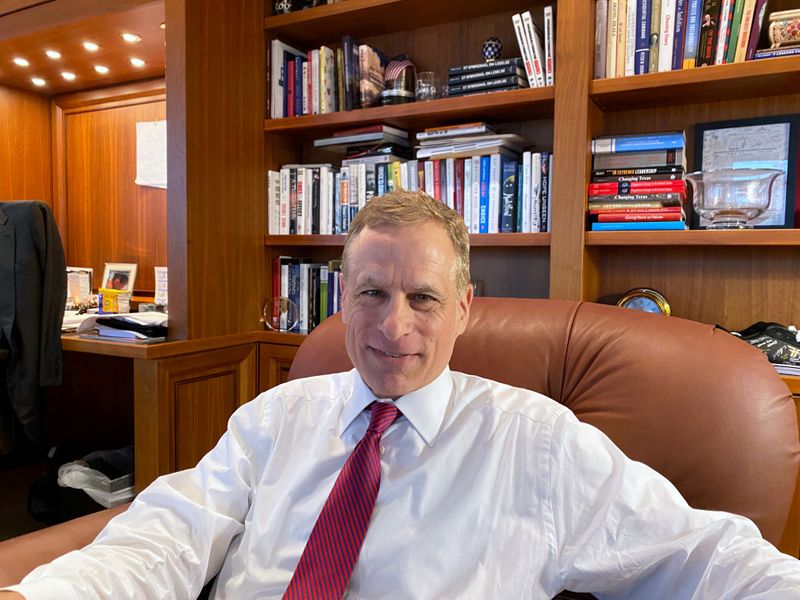By Ann Saphir
(Reuters) -As Federal Reserve policymakers begin an intense debate over when they should begin to pull back some of the massive support they are delivering to the economy, they are split over what poses the bigger risk: a still-large jobs deficit or a potential inflation shock.
On one side are Robert Kaplan and James Bullard, the chiefs of the Dallas and St. Louis Fed banks, respectively. On Thursday they separately warned that inflation could rise higher and stay high longer than many of their colleagues may anticipate.
"Policymakers will have to take this new risk into account in the months and quarters ahead," Bullard told the Clayton Chamber of Commerce near St. Louis.
The pair are among seven Fed policymakers, out of 18 total, who believe the Fed will need to start raising interest rates next year to keep the economy on an even keel. The rest believe 2023 or even later would be appropriate.
On the other side are New York Fed chief John Williams, Philadelphia Fed President Patrick Harker, and Richmond Fed President Thomas Barkin, each of whom on Thursday emphasized how many millions of the jobs shed in the pandemic have yet to come back.
True full employment is still "somewhere down the road," Barkin told the Richmond Risk Management Association in a virtual event, with Americans likely to flood back to the workforce in the fall, curing what many employers now say is a labor shortage.
Meanwhile, he said, inflation will likely recede in the fourth quarter, in no small part because businesses will respond by boosting supply. "A great cure for high prices is, well, high prices," he said.
Fed Chair Jerome Powell has also frequently laid out the case that inflation will be temporary, and often points to the giant jobs deficit - as many as 10.6 million, Harker said on Thursday - to show how far off full employment is.
The stakes for the debate are high.
If inflation is the bigger threat, waiting too long to withdraw some of the Fed's massive stimulus could allow an upward price spiral to take hold, undermining household purchasing power and dragging on economic growth.
If the labor market is the worse problem, reducing support too soon risks millions of Americans never getting their jobs back.
When the pandemic began last year, the Fed faced little tension between its two mandates of full employment and stable prices. Near-zero interest rates and $120 billion in monthly asset purchases were calibrated to do double duty, pushing up on hiring and what had been too-low inflation by driving down borrowing costs.
But now, with the economy reopening at a fast clip and businesses struggling to meet demand, consumer prices rose 5% last month, the fastest since 2008. Prices for some items rose even faster, with bacon up 18% versus a year ago and used cars up 30%.
Along with concern in some quarters over the potential persistence of such price rises are doubts over whether the job hole can truly be filled before interest rates will need to rise.
Pointing to the 2.5 million or more Americans over 55 who have retired since the pandemic began, Dallas Fed's Kaplan on Thursday said it is unclear how many will return to the workforce.
That, along with the 1.5 million workers who have left jobs to care for family members, means the labor market may be tighter than the current 5.8% unemployment rate suggests, he told the Headliners Club of Austin.
And though some portion of the inflation rise is temporary, he said, there is "upside risk" to his projection for 2.4% or 2.5% inflation next year, a level well above the Fed's 2% goal.
That is one reason, Kaplan said, the Fed should start trimming its asset purchases "sooner than later" to gently begin the process of reducing stimulus and avoid having to slam on the brakes sharply later on. Continuing asset purchases longer than necessary could also fuel excesses and imbalances in financial markets, Kaplan said.
But that is not how New York Fed's Williams sees it.
"Once the recovery is more complete and the economy is in a very good place, then we can take back the low interest rates and get them back to more normal levels," Williams said during a virtual conversation hosted by the College of Staten Island. "It's not the time now because the economy is still far from maximum employment."
